Life
in and Beyond the Solar System
Printable
version
May
4, 2000
Announcements
-
Final
in room B130 Van Vleck 12:25pm May 16
-
Homework
#7 due next Tuesday
-
Observing
project due next Tuesday
-
Extra
credit project due next Friday
-
Slight
change in syllabus: review starts next lecture
-
I will
cover general topics Tuesday
-
please
submit specific questions for Thursday
Life
in and Beyond the Solar System Preview
-
Basic
ingredient of life
-
How
they may have formed on Earth
-
Could
this be unique to us?
-
Review:
where else may have their been life in the solar system?
-
Given
the basic ingredient is evolution to higher life inevitable?
-
probably
only if conditions are just right
-
Estimating
the number of "Just Right" places
-
What
are we doing to look for life elsewhere
-
Telescopes
for direct imaging only a dream
-
Search
for Extra Terrestrial Intelligence (SETI)
-
Look
for radio broadcast from other civilizations
-
You
can participate too!
-
Social,
political, religious ramifications
Basic
Ingredient of Life
-
Chemically,
life as we know it depends on organic molecules
-
organic
molecules contain carbon (by definition)
-
also
have hydrogen, nitrogen, oxygen, sulfur, among others
-
Review:
were these elements common or rare on the proto-planet Earth?
-
common
-
Where
did these elements originally come from?
-
Star
barf (Supernova explosions)
How
Organic Molecules May Have Formed on Earth
-
Method
one: they fell from the sky
-
recall
different types of meteorites:
-
Stony
-
Stony
Iron
-
Iron
-
Carbonaceous
Chondrite
-
Carbonaceous
Chondrites contain organic molecules!
-
Method
two: lightening in an atmosphere of water, carbon dioxide, nitrogen, and
hydrogen
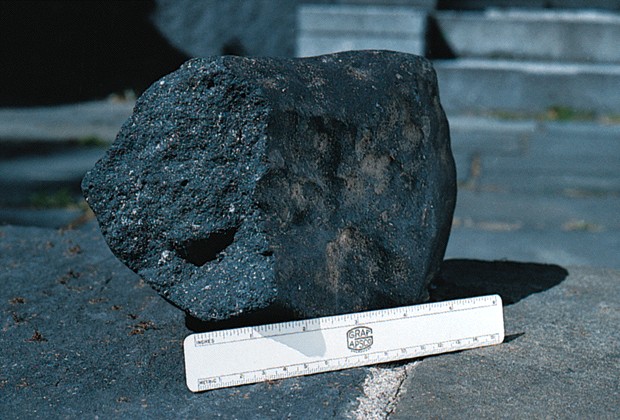
Updated
Miller-Urey Experiment
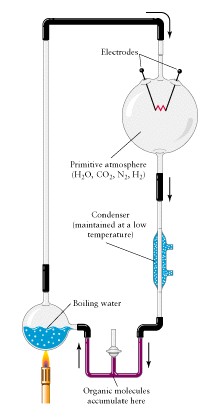
Could
Organic Molecules be Unique to Earth?
-
Since
Carbonaceous Chondrite meteorites fell everywhere in our solar system,
the building blocks of life are everywere
-
Are
their organic molecules elsewhere in the Galaxy?
-
YES!
-
Star
barf (Supernova explosions) not unique, probably make Carbonaceous Chondrites
elsewhere
-
Radio
astronomers detect emission from other organics
-
coming
from star forming regions called molecular clouds
-
ethyl
alcohol, formaldehyde, cyanoacetelete
Review:
where else may there have been life in the solar system?
-
Mars:
Martian meteorite shows possible fossilized microbes
-
Europa:
May have warm sub-surface ocean
-
Europa
is a moon of what planet?
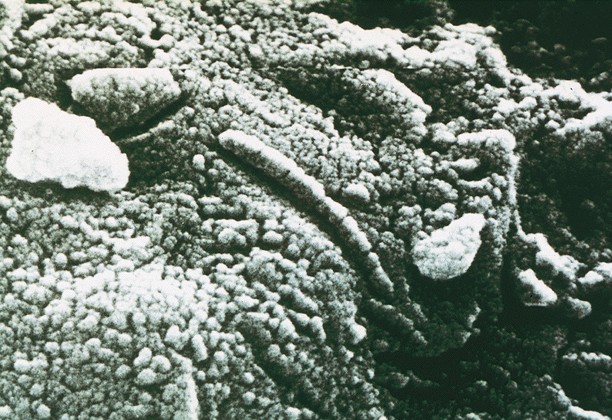
Is
Evolution from Organic Compounds to Life Inevitable?
-
NO
-
Any
hostile environment can squelch life
-
Life
seems to like liquid water, nice neutral chemical medium for reactions
-
Liquid
water needs something pressing down on it
-
Atmosphere
or ice-top
-
Planets
with no atmosphere like Mercury unlikely to have life
-
Sulfur
dioxide on Io might be poisonous
-
Io
is a moon of what planet?
-
Sulfuric
and other nasty acids on Venus
-
Many
ways to keep organic compounds from becoming life
-
For
life to evolve from organic chemicals, conditions probably have to be just
right
Estimating
the number of just Right places in the Galaxy
-
What
does it take to be a just right place?
-
need
a star for warmth, energy
-
need
a planet to protect from star
-
probably
need a terrestrial planet
-
possibly
a particular atmosphere
-
stable
or unstable conditions to nurture or stimulate life
-
Some
think land animals got crowded out of oceans
-
etc.
etc.
-
We
know a about how many stars form in the Galaxy every year
-
from
this and other estimates, we can estimate the number of intelligent civilizations
in the Galaxy:
-
The
Drake Equation
N
= Rs fp ne fl fi fc
L
-
N
= number of civilizations (what we are looking for)
-
Rs
=
Rate of Sun-like stars forming in the Galaxy
-
fp
= fraction of these stars that have planets
-
ne
= average number of Earth like planets in these systems
-
fl
= fraction of Earth like planets on which life actually arises
-
fi
= fraction of these life forms that that develop into intelligent beings
-
fc
= fraction of life forms that develop civilization
-
L
= lifetime of civilization
| Variable |
Book Value |
Alternate value |
| Rs |
1 1/year |
1 1/year |
| fp |
1 |
1 |
| ne |
0.1 |
1 x 10-4 |
| fl |
1 |
0.1 |
| fi |
1 |
0.1 |
| fc |
1 |
0.1 |
| L |
100 years |
10,000 years |
| N |
10 |
0.001 |
What
are we doing to look for life elsewhere?
-
Recall
that pluto looks to Hubble Space telescope like Mars did to Percival Lowell
-
Will
be ever be able to SEE life on other planets?
-
only
with dream telescopes:
-
Planet
Imager (probably not possible until 2015)
-
would
we see canals? probably not
-
More
practical search: a spectrum is worth a thousand pictures
-
look
for spectroscopically evidence of water, oxygen, ozone, carbon dioxide
-
Terrestrial
Planet Finder possible launch in 2010
Best
image of Mars in 1926
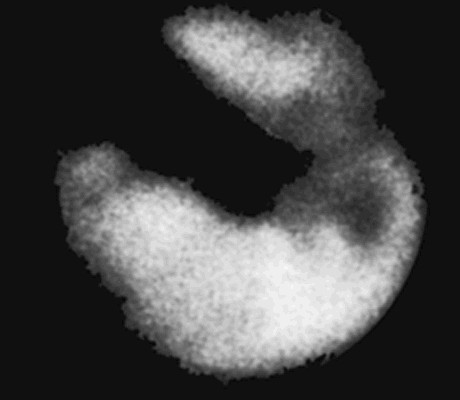
Best
image of Pluto in the 1990s
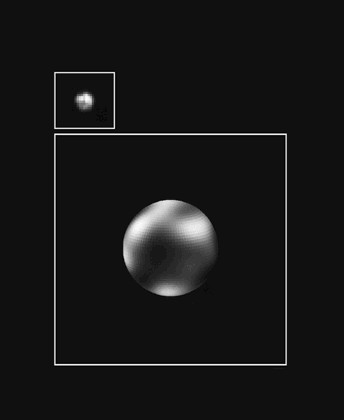
Spectrum
of simulated planet
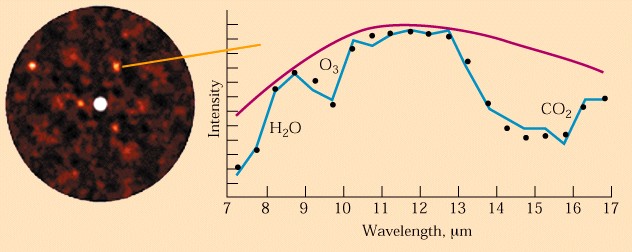
SETI
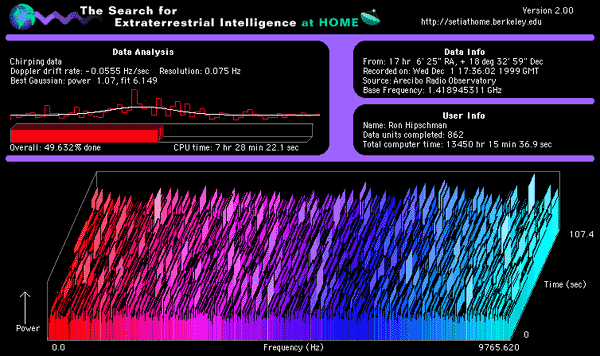
Social,
Political, and Religious Ramifications
-
Currently,
the radio version of SETI is not funded by the US government
-
Depending
on the solution to the Drake equation, SETI might be a colossal waste of
money
-
Mostly
collecting noise
-
Funds
and efforts coming from private individuals and foundations
-
On
the other hand, new telescopes that discover things about other stars and
planets is NASA's usual style
-
What
if there are other creatures out there?
-
Should
we be afraid of them?
-
What
does that mean about Earth-based religions?
Life
in and Beyond the Solar System Summary
-
Basic
ingredience of life
-
How
they may have formed on Earth
-
Could
this be unique to us?
-
Review:
where else may have their been life in the solar system?
-
Given
the basic ingredience is evolution to higher life inevitable?
-
probably
only if conditions are just right
-
Estimating
the number of "Just Right" places
-
What
are we doing to look for life elsewhere
-
Telescopes
for direct imaging only a dream
-
Search
for Extra Terrestrial Intelligence (SETI)
-
Look
for radio broadcast from other civilizations
-
You
can participate too!
-
Social,
political, religious ramifications







